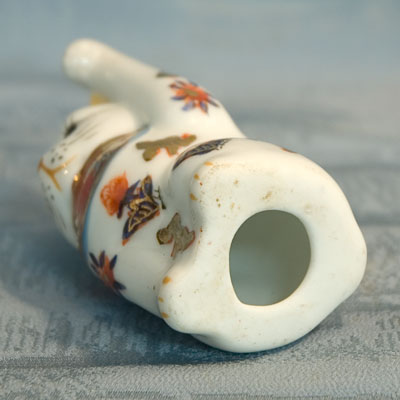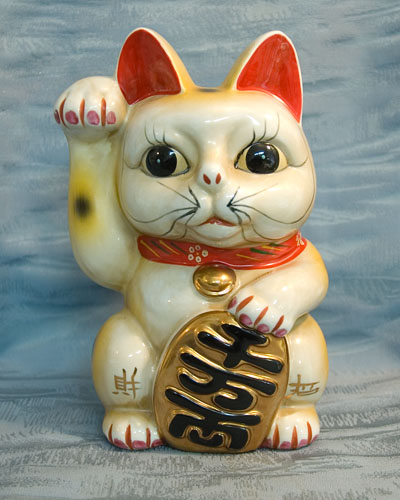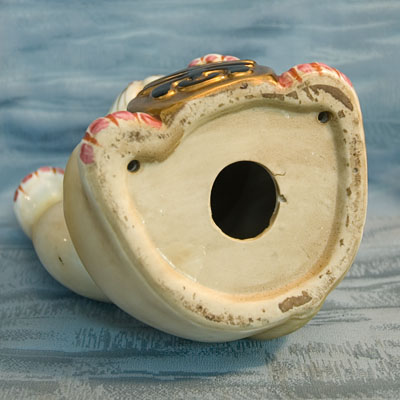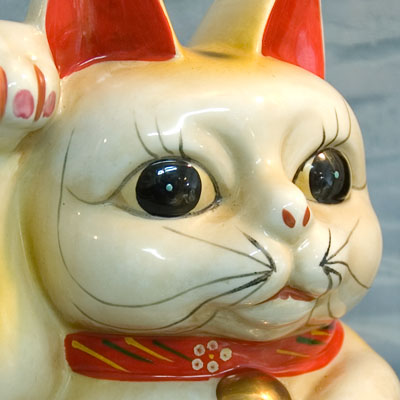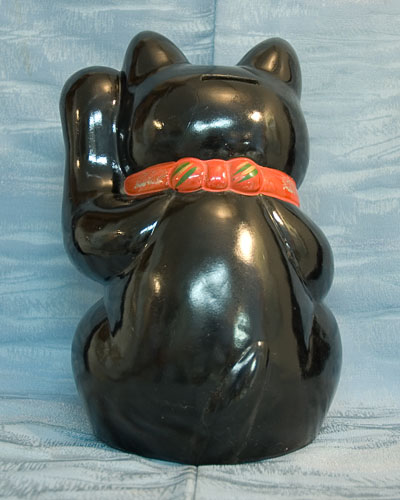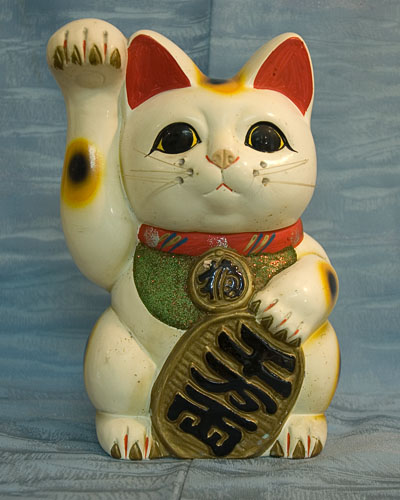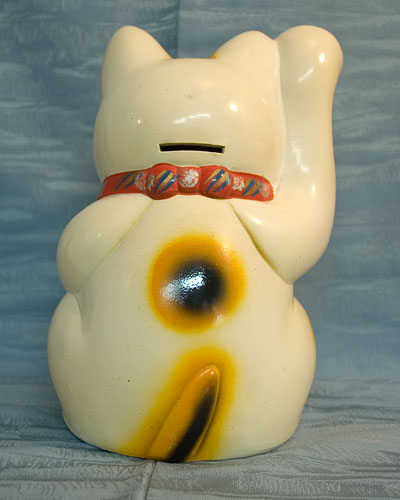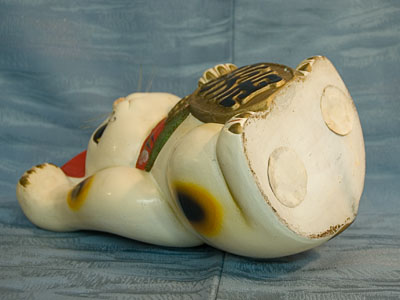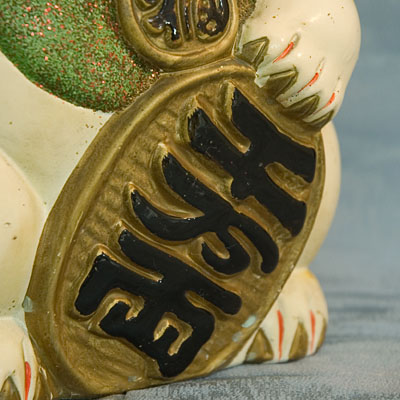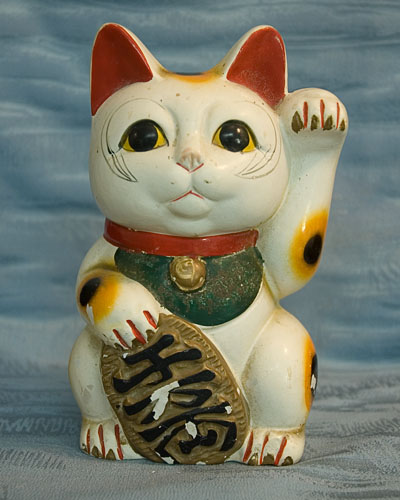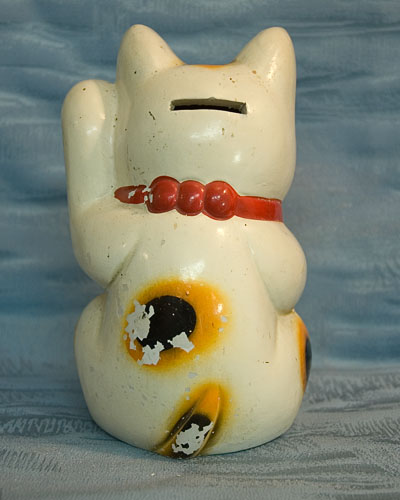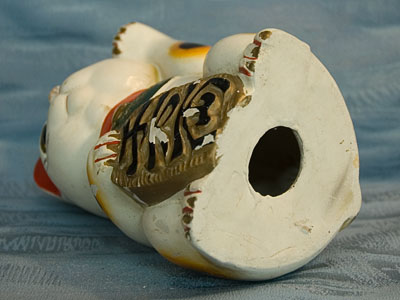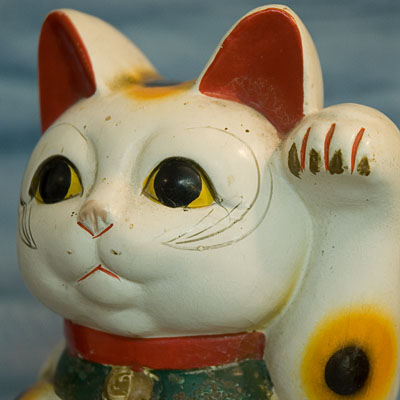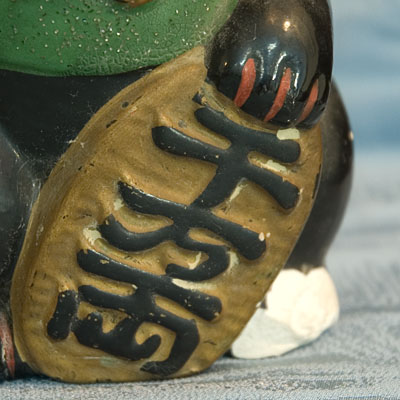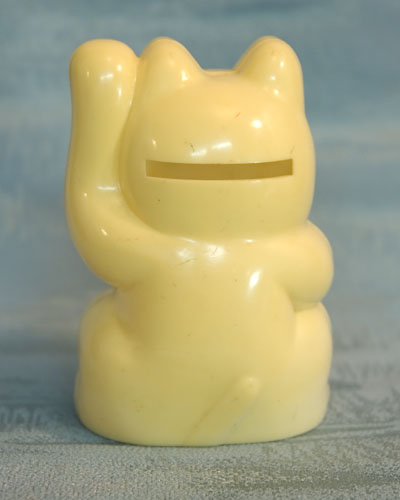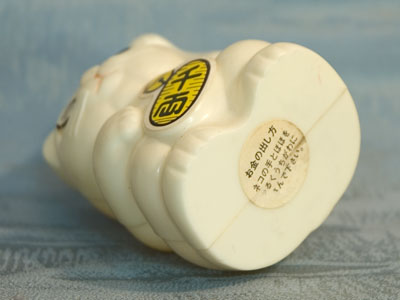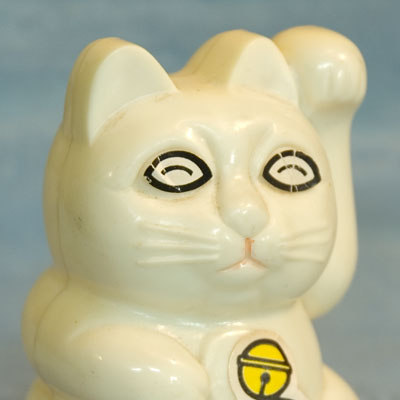
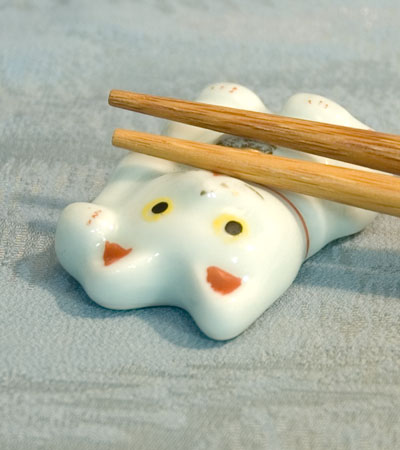
Description
Japanese table etiquette prescribes many rules (see list below) for the proper use of chopsticks or hashi as they are called in Japanese. One of the most important rules is that the eating ends of the hashi should never be allowed to touch the table. Accordingly, the Japanese have developed a wide range of beautiful and interesting chopstick holders called hashi oki, which are designed to elevate the ends of the chopsticks above the table when not in use.
About the Listed Item
This charming little chopsticks holder takes the shape of a Japanese Maneki Neko luck cat. The chopsticks holder is less than 20 years old and is a bit worn from past use with faded paint and some small chips. Please read below to learn more about Maneki Neko, Japan’s beloved lucky feline.
Size:
Height: 0.6 inches (1.5 centimeters)
Length: 1.8 inches (4.5 centimeters)
Weight: 1.1 ounces (31 grams)
Click here to see more chopsticks holders!
Click here to see additional Maneki Neko items!
Click here to see more fine-quality Japanese ceramics!
Click here to see additional treasures from Japan!
Japanese Chopstick Etiquite
Chopsticks are called hashi in Japanese and the following is an informal list of rules and suggestions for proper Japanese hashi use. Many of these rules have their origin in religious belief and are taken seriously by most Japanese. Though few would actually say anything to a foreign rule-breaker, most Japanese find the following actions a bit difficult to witness.
The Rules:
- Never let the business end of your chopsticks touch the table top.
- Don’t wave the chopsticks or use them to hover over food while deciding which morsel to pick up.
- Avoid food dripping or falling from your chopsticks.
- Do not spear food with your chopsticks.
- Don’t suck on the ends of chopsticks or close your mouth completely around them.
- Speakers at formal meals should never tap their chopsticks against tableware in order to gain the attention of others.
- Never exchange food via chopsticks. Always place shared items on a plate and pass the plate to the intended recipient.
- And by all means NEVER stick your chopsticks into your rice bowl and leave the chopsticks standing on their own! This particular rule stems from the Japanese funeral and memorial practice of using a bowl of rice with chopsticks stuck in the top as an offering to the spirits of the dead. I’ve personally experienced the lightning fast reflexes of an otherwise gentle and demure Japanese mother who quickly snatched my hashi from my rice bowl after my first (and only) experience violating this rule.
Disposable Chopsticks and Improvised Chopstick Holders:
While the Japanese enjoy using beautifully designed and decorated reusable chopsticks at home, diners at Japanese restaurants (even very expensive restaurants) will likely be given a pair of cheap disposable wooden chopsticks to use with their meal. The disposable chopsticks consist of a single piece of wood which is split up the middle. The restaurant diner makes use of these by first removing the paper cover and then pulling the sticks apart to separate them. Some people then brush the eating ends together several times in order to remove any small splinters or rough edges which may remain. When dining with Japanese people please keep in mind the rules noted above and follow the lead of your hosts. When you wish to rest your chopsticks be sure to use a chopstick holder (hashi oki) or, if no holder is available, you can rest your chopsticks on the lip of any large plate or bowl. Surprisingly, most Japanese restaurants do not provide any hashi oki for their customers, and many Japanese are therefore adept at making their own from the paper which covered their disposable wooden chopsticks. Reminiscent of the unique Japanese paper-folding craft called origami, folded paper hashi oki are a utilitarian wonder of inspired necessity, crafted with care by people who take their mealtime etiquite seriously and who are able to preserve propriety through creative ingenuity. When dining with Japanese people keep an eye open at the start of the meal and you just may witness someone engaged in the skilled act of making their own paper hashi oki. If you ask, I’m sure that they would be delighted to teach you to do the same…
Maneki Neko – Japan’s Beckoning Luck Cat
Japanese legend holds that long ago an emperor was traveling on horseback when he spotted a small cat waving at him. After the emperor dismounted from his horse to get a closer look the horse was struck by lightning and killed. Subsequently, the emperor pronounced that cats in general should be respected as sacred animals and thus was born the legend of the beckoning Maneki Neko. This is just one of several popular tales regarding the origin of Japan’s most famous cat.
Today in Japan you are likely to spot a Maneki Neko figure waving at you from within just about every Japanese place of business. The legendary kitty has been transformed from an emperor saving Samaritan to a bringer of money and good fortune to all Japanese. There are basically three types of Maneki Neko: The first and oldest type is waving a single paw in an effort to attract people to it (just like the emperor’s savior). Another newer version (yet still likely centuries old) is a Maneki Neko waving one paw while holding an old fashioned Japanese coin in the other paw. This second type is thought to bring wealth to its owner. The final type of Maneki Neko is a modern version which waves both paws. Still further variations exist with additional meaning even ascribed to such things as the color and pattern of the coat. Maneki Neko are usually ceramic and are often used as piggy banks. Piggy bank Maneki Neko will have a slot in their back to receive coins and a hole in the bottom for their removal. Many modern Maneki Neko are purely decorative (no piggy bank) and may be made of papier-mache or cloth in addition to the traditional ceramic styles. To learn more, please visit our About Japan page and look for the feature titled Maneki Neko Corner. This special section of our website is dedicated exclusively to all things Maneki Neko and includes additional information as well as interesting photos of authentic Maneki Neko in use in Japan today.
item code: R3S4B4-0003732
ship code: L1650




